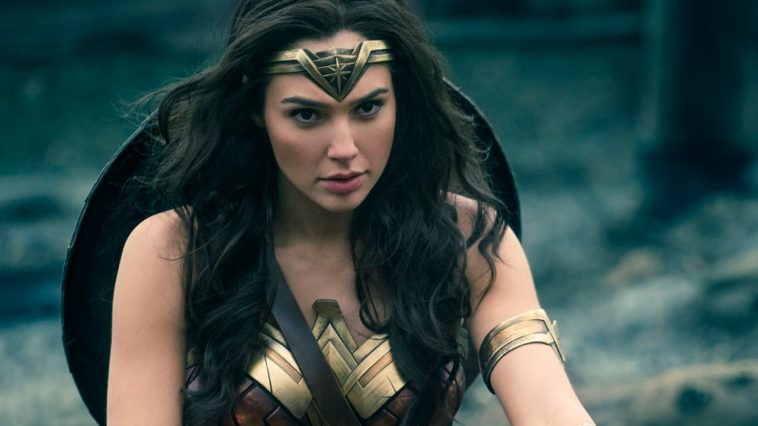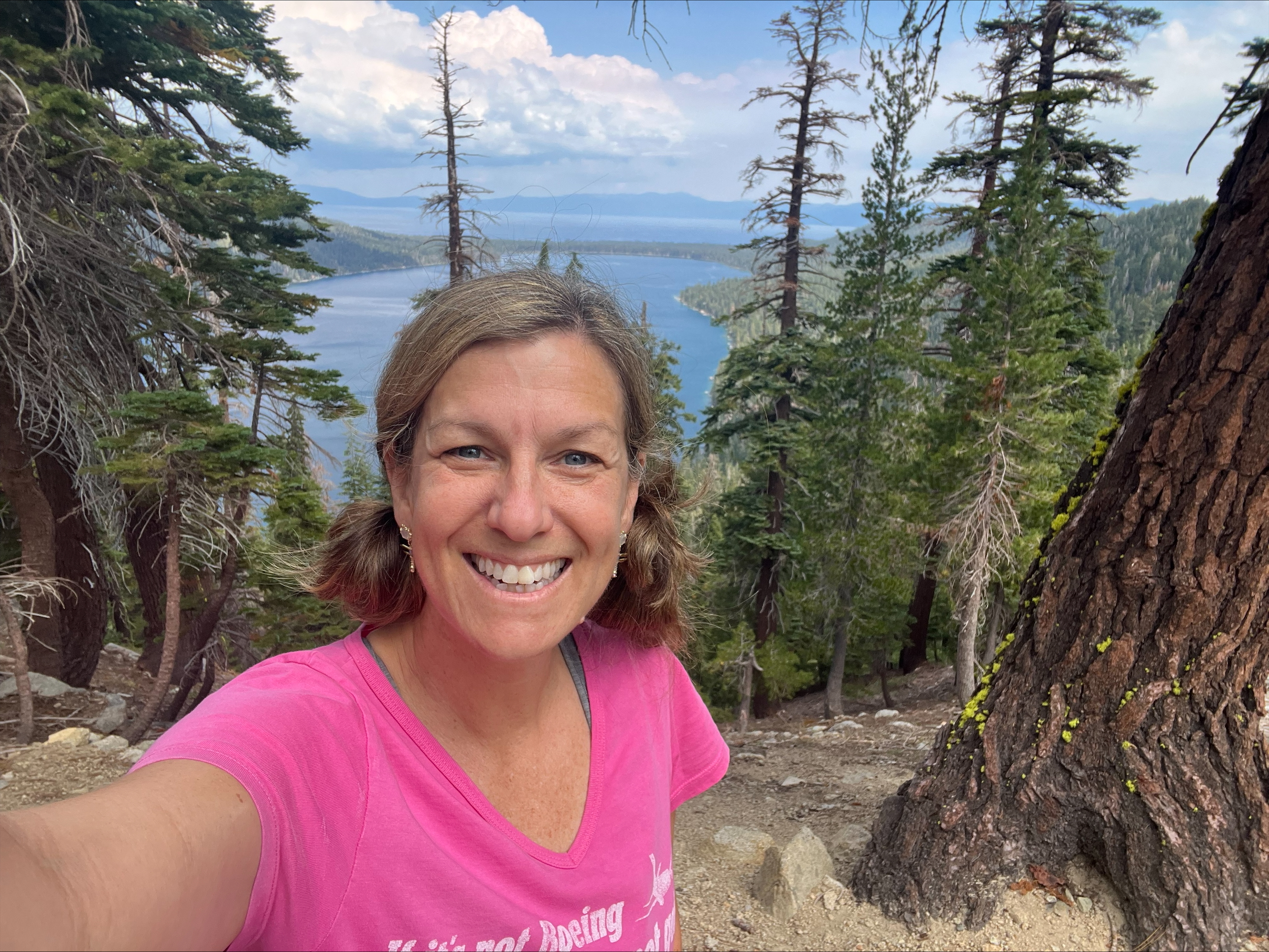“Overdue.” You’ll see that word in almost every review of the new Wonder Woman movie. While Batman and Superman, her DC Comics compadres, have a couple dozen full-length feature films between them, until now Wonder Woman had exactly zero. So comic book geeks and superhero movie fans were chewing their fingernails in anticipation of this summer’s release, wondering if director Patty Jenkins could save the day for women in a film genre saturated with testosterone and powered by ever-escalating spectacles of CGI-driven violence.
That answer: yep. Everyone can breathe a sigh of relief.
Earning $450 million at the box office in the first two weeks along with raves from critics, fans, and—perhaps most important—preteen purchasers of tie-in merchandise, this film is an indisputable success. Jenkins has proven once and for all that Hollywood’s doubts about female-superhero-driven movies were ridiculous. The warrior maiden returns!
Played by the splendid Gal Gadot, this Wonder Woman is fit, fleet, and fabulous. From a movie-making point of view, though, that was the easy part. What sets this movie apart in its genre is a fresh, thoughtful character arc, one that perhaps only a female superhero tale could sustain.
This is Wonder Woman’s origin/coming-of-age story, so we begin with an ultra-capable but pure-hearted, naïve girl whose sense of destiny remains fuzzy on the details. What drives the story is this fascinating imbalance between her supreme skill and her innocence. Our young heroine must gain experience without losing that pure heart. That’s what it will take to fulfill—as we might say—her vocation. At every turn, it’s much more difficult than she imagined.
 With that serious character throughline at its heart, the movie invites us along for some satisfying, even campy fun. First: Amazon fun. After a quick present-day frame opening, we leap back to Themyscira, the Amazon island hidden in the mists. As a New York Times critic put it, it’s a “Bechdel-test paradise.” No men. And no children—except the fierce little Diana, shaped from the clay by Queen Hippolyta (subtext: no human male involved) and given life by Zeus. Diana longs to spend her days like the entire citizenry of the island, training for combat under the stern tutelage of her aunt Antiope (a tanned and taut Robin Wright). In the bright Mediterranean sun, the women leap and twirl and slam in their leather mini-togas, the camera obligingly slo-moing to linger over their lithe, powerful frames as if this were an ESPN photo shoot. And horses! They ride horses!
With that serious character throughline at its heart, the movie invites us along for some satisfying, even campy fun. First: Amazon fun. After a quick present-day frame opening, we leap back to Themyscira, the Amazon island hidden in the mists. As a New York Times critic put it, it’s a “Bechdel-test paradise.” No men. And no children—except the fierce little Diana, shaped from the clay by Queen Hippolyta (subtext: no human male involved) and given life by Zeus. Diana longs to spend her days like the entire citizenry of the island, training for combat under the stern tutelage of her aunt Antiope (a tanned and taut Robin Wright). In the bright Mediterranean sun, the women leap and twirl and slam in their leather mini-togas, the camera obligingly slo-moing to linger over their lithe, powerful frames as if this were an ESPN photo shoot. And horses! They ride horses!
It’s tough to hit all the right woman-power buttons, but I think Jenkins has done it. She manages to make the Amazons sexy without objectification. We’re impressed—but also amused. For example, what’s up with their accent? Is it, as one critic remarked, “what linguists refer to as ‘All-Purpose Antiquity’”? Not sure, but you’ll be relieved to know that these Amazons do not, as in some classical traditions, cut off one breast so as to facilitate archery. One wonders, however, where they obtain all the leather and fur they wear, as I counted exactly one cow on the island. One also wonders whether all that leather gear tends to chafe in the heat, and how much they might appreciate Lycra, should someone introduce it.
After some resistent fuss from her queen mother (Connie Nielsen), Diana begins to train. Just as she comes into her powers and beats her mentor/aunt, the plot twists into the next kind of fun: Chris Pine, in the form of Steve Trevor falling from the sky in a World War I German biplane. He’s not German (of course not—are you kidding?); he’s an American spy, working for the Allies. Diana pulls him out of the water (note: she rescues him), and after giving two gorgeous human specimens a few moments to marvel at each other, the evil Germans pop through the enveloping mist and proceed to storm the Amazon beach. Battle scene!
I’ll commit one bad spoiler here and reveal that Diana loses her mentor in this battle. Anyone familiar with the Hero’s Journey story pattern could have predicted it. Whether the Hero’s Journey patternworks for a female protagonist has always been an interesting question. Some have thought that female characters have their own version of it, which this film might indeed demonstrate. To go into a thorough analysis I would need to commit many more spoilers, so perhaps another time.
For now, back to Chris Pine fun with a nice PG-13 nude scene. Diana comes upon Steve recovering from his battle wounds in an awesome, multi-level, Amazonian hot tub. Was screenwriter Allan Heinberg aware of this wonderful reversal of the Acteon myth? In which poor Acteon comes upon the goddess Diana bathing, and Diana in her wrath turns Acteon into a stag and sends his own hounds to tear him apart? Fortunately, nothing so dreadful happens here. Steve is charmingly abashed; witty banter ensues.
Diana eventually sets off with Steve, in true Hero’s Journey fashion, away from her home and into the wide world. They’re on parallel missions to stop the War to End All Wars, she by killing Ares, the god of war, he by delivering a secret notebook to the British authorities. She knows the Amazons are supposed to be a “bridge to a greater understanding between all men” (that would be among all men, but moving on…), and she knows Ares causes human wars. Thus, obviously, this is her moment to find Ares and stop war forever. Steve just wants to complete his spy duties and do his part. So the mythic and historical intertwine and the two pursue their missions side by side.
 This middle part of the film shows off the gentle, funny chemistry between Pine and Gadot. Steve and Diana sail off first to London, where Diana delights in babies and ice cream, puzzles over impractical ladies’ fashions, and proves her mettle as both linguist and street fighter. At one point, she gives the what-for to a hurrumphing roomful of astonished patriarchy. Meanwhile, Steve manages to be decent, respectful, and duly amazed by her all at once, equal parts her guide and capable sidekick.
This middle part of the film shows off the gentle, funny chemistry between Pine and Gadot. Steve and Diana sail off first to London, where Diana delights in babies and ice cream, puzzles over impractical ladies’ fashions, and proves her mettle as both linguist and street fighter. At one point, she gives the what-for to a hurrumphing roomful of astonished patriarchy. Meanwhile, Steve manages to be decent, respectful, and duly amazed by her all at once, equal parts her guide and capable sidekick.
Something seemed new to me about this whole buddy-movie sequence but I couldn’t quite figure it out. Finally it dawned on me: let’s call it the Amazon Phenomenon. Imagine a woman who has never learned to wheedle, flirt, seduce, defer, pout, or submit. She speaks a hundred languages, knows her Thucydides, has no fear. She is neither needy nor damaged. As for her sexuality, she is fully informed but inexperienced. She does not need a man, but that doesn’t mean she can’t appreciate one. Above all, she focuses on her mission. After so many male heroes with their tiresome dark sides, anger issues, father wounds, appetites, ego needs—what a refreshing change.
Plus, let’s just admit: Gadot is mesmerizing. Raised in Israel, at age eighteen she won the Miss Israel pageant and then served in the Israeli military. She has since enjoyed a successful modeling career, married, and had two daughters. She gained seventeen pounds of muscle for this role, and she looks fantastic. And her hair! The up-dos alone in this movie are worth the price of admission. And that low-to-the-side chignon she wears in the London scenes: give that hair dresser an Oscar. Even poison gas fails to muss this woman’s wonder-hair (note: shampoo tie-in idea). It’s not just her beauty, though—Gadot can do it all. She gives Diana intelligence, depth, fierceness, and just the right balance of determination and dismay.
The dismay comes as Diana faces the world of “men” (convenient how that pronoun works as both gendered and generic). After gathering the requisite band of rag-tag, ethnically cliche misfits as a support team for their crazy-dangerous plan, Diana and Steve head to the front. Like Siddhartha Gautama, the sheltered Diana now confronts the reality of suffering. It’s excruciating—the innocents, the mothers, the children! She immediately wants to save everyone. Steve has to explain to her about trench warfare, about the need to focus on their mission.
Well, she can’t stand it, so in the coolest action sequence of the film, Diana flings off her cloak disguise, leaps out of the trench, and charges right across No Man’s Land (get it) with nothing but a leather bustier, her bullet-repelling wrist bands, a shield, a super-lasso, and a lot of nerve. Conveniently, she spares no worry for the possible innocence of young German soldiers. This is not a world of moral nuance.
From here, our fledging superhero faces both victories and setbacks, and we watch her naive view of heroism crumble under the weight of human cruelty. Diana’s mission—find Ares, kill Ares, end all war—proves much trickier than she imagined. Ares turns out less obvious than she expected, more Mephistopheles than monster. He merely whispers ideas into human minds, he tells her. Humans fight wars of their own volition. I’m not the god of war, he says, I’m the god of truth. Join me and we’ll destroy them all, etc.
Thus, Diana’s greatest challenge is not saving Belgian villages or snapping her fiery Lasso of Truth at nameless bad guys. Her greatest challenge is holding to her purpose—to bring peace to humankind—even after discovering the horrid truth about us. Ares isn’t really the god of truth; he’s the god of cynicism and despair.
 There’s a wonderful moment when Diana, with great ceremony, performs an act which she believes will accomplish her goal, and then… silence. Nothing happens. Nope, you’re not finished. There’s more. There’s always more. Steve had warned her: if only it were as simple as defeating one big baddie. But it never is. Facing that discouraging reality and pressing on—that’s Diana’s inner task. There’s a darkness in human nature (we call that depravity, dear) that no amount of bad-assery will ever eradicate.
There’s a wonderful moment when Diana, with great ceremony, performs an act which she believes will accomplish her goal, and then… silence. Nothing happens. Nope, you’re not finished. There’s more. There’s always more. Steve had warned her: if only it were as simple as defeating one big baddie. But it never is. Facing that discouraging reality and pressing on—that’s Diana’s inner task. There’s a darkness in human nature (we call that depravity, dear) that no amount of bad-assery will ever eradicate.
Nevertheless, she persists.
Thankfully, Jenkins paces the second half of the movie so that the action sequences are varied and spaced to give us plenty of time for the story. The final showdown, as many reviewers complain, reverts to a fairly predictable CGI-enhanced battle of the titans, though it does refrain from inducing the usual “raging cinematic migraine.” Ares devolves to part-Vader, part-Voldemort. Diana, of course, finds her inner compassion in a move with some nice feminist-solidarity overtones. At the decisive moment, she thinks of Steve, and of human decency, and of lurrrrrv. She professes a somewhat cheesy credo. The sequence goes a little long.
But never mind. Superheroes are always a little simplistic, a little too larger-than-life. They tend to solve injustice through violence and that’s a genuine limitation. Even so, we can’t resist them, and maybe we need them. After all, they have been the stuff of human story-telling since the very beginning of stories (as my colleague Chad Engbers pointed out in his Facebook post citing a parallel to Gilgamesh). Perhaps we need large, boldly drawn models to help us find our way in a pathless, confusing world. That’s why there’s so much fuss over “representation” in Hollywood.
Does this Wonder Woman “represent”? Well, she does seem to have shed the less savory aspects her original creator bequeathed her in 1941. William Moulton Marston, a complex fellow to say the least, modeled her on suffragists, but also on popular pinup girls, with a dollop of his own covert fetishism. After her initial popularity, Wonder Woman suffered through a wimpy, damselly phase. Now, we have our new version, born of Title IX, several waves of feminism, and a new global awareness. She does rely on violence—after all, she’s an Amazon. It must be said, though, that she’s well prepared for a career in diplomacy (a hundred languages??), or perhaps museum antiquities. In any case, Patty Jenkins is evidently already receiving appreciative notes from moms, teachers, and young girls.
What does this Wonder Woman teach young girls? Be strong, be good, be courageous and bold. Learn, train, prepare. There’s nothing wrong with innocence, but you will need to gain experience. Keep your heart, despite all the despair and suffering you see. Stay in the struggle.
All in all, not bad.
And yes, she’s overdue. Great female heroes always seem to be. In the 1590s, Edmund Spenser complained in his epic romance The Faerie Queene that the female warrior tradition had been suppressed since ancient times by jealous men. To honor his Queen Elizabeth, Spenser determined to revive this tradition by inventing Britomart, a lady knight, an examplar of chastity and supposed ancestor of Elizabeth. Like Diana, Britomart is a skilled warrior who easily beats the male knights and stays on task through the strength of her pure heart and “steadfast” mind. She combines “manly terror” and “amiable grace.” For her, too, moving from naivete to experienced wisdom is the greatest challenge.
Spenser only committed one of the Faerie Queene’s six books to Britomart. After that, there’s nothing quite like her in literature for a long, long time. The warrior maiden archetype tends to disappear for long periods and reemerge when the need is great. Apparently, that’s right now.





